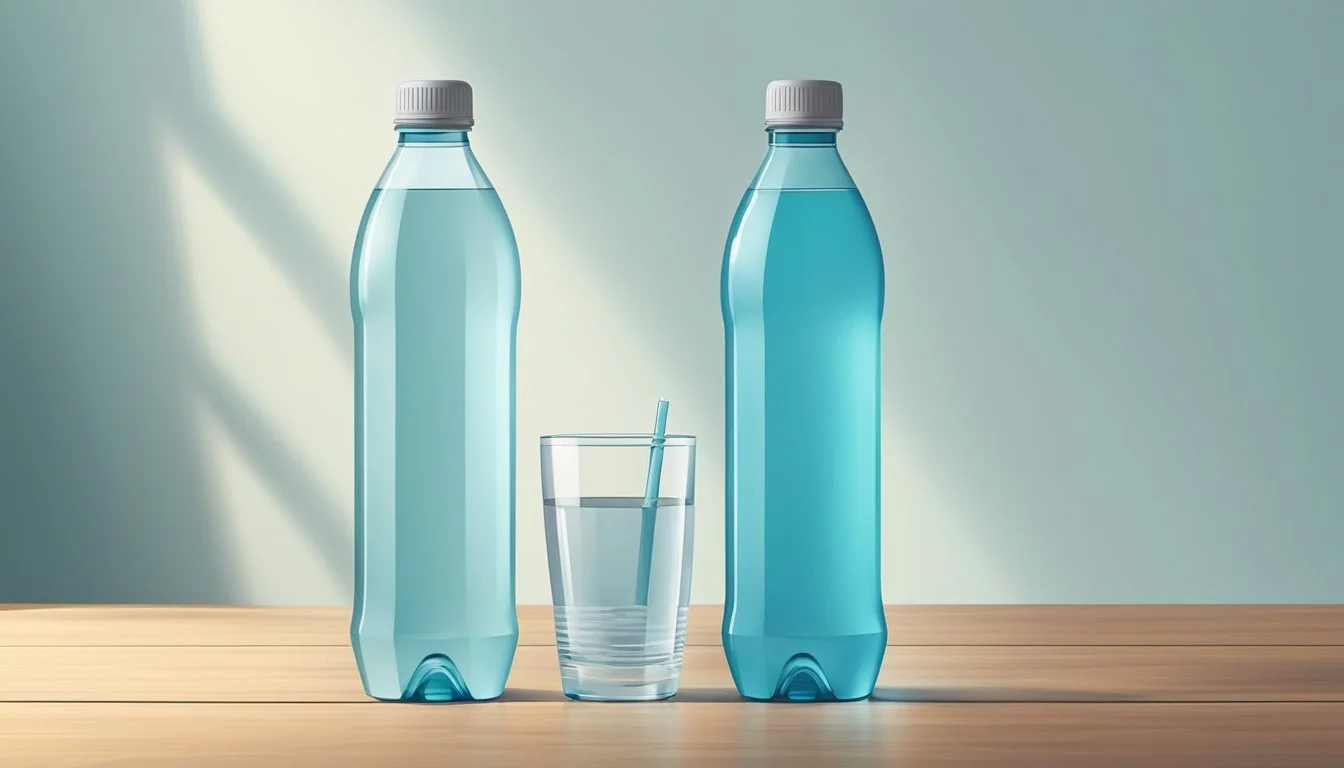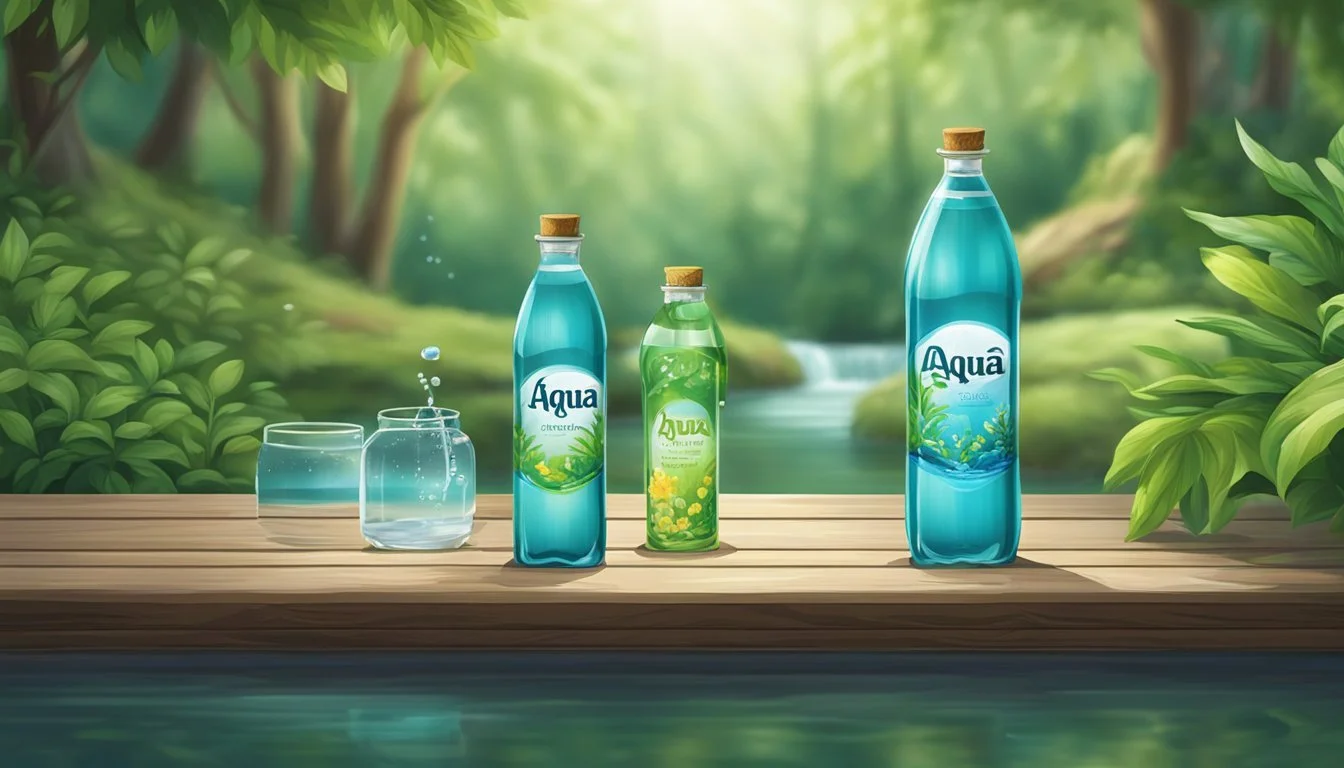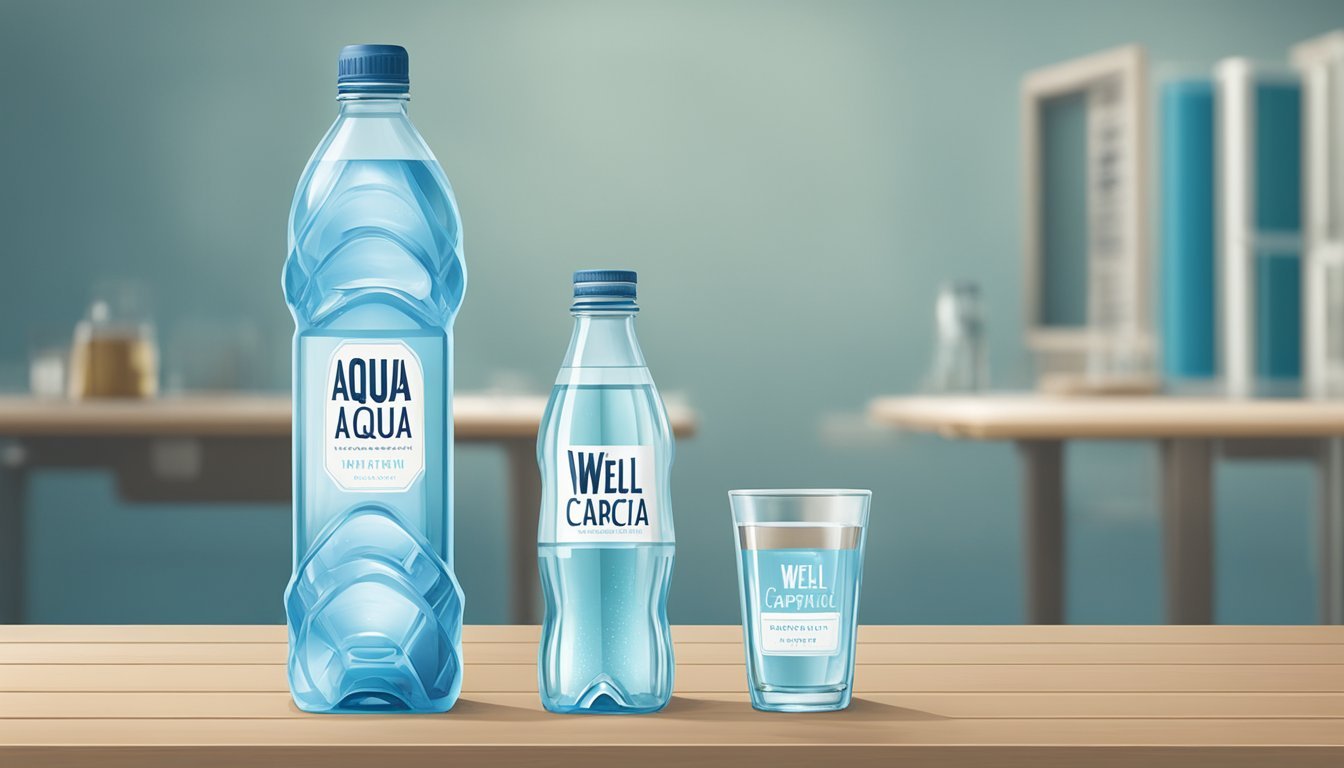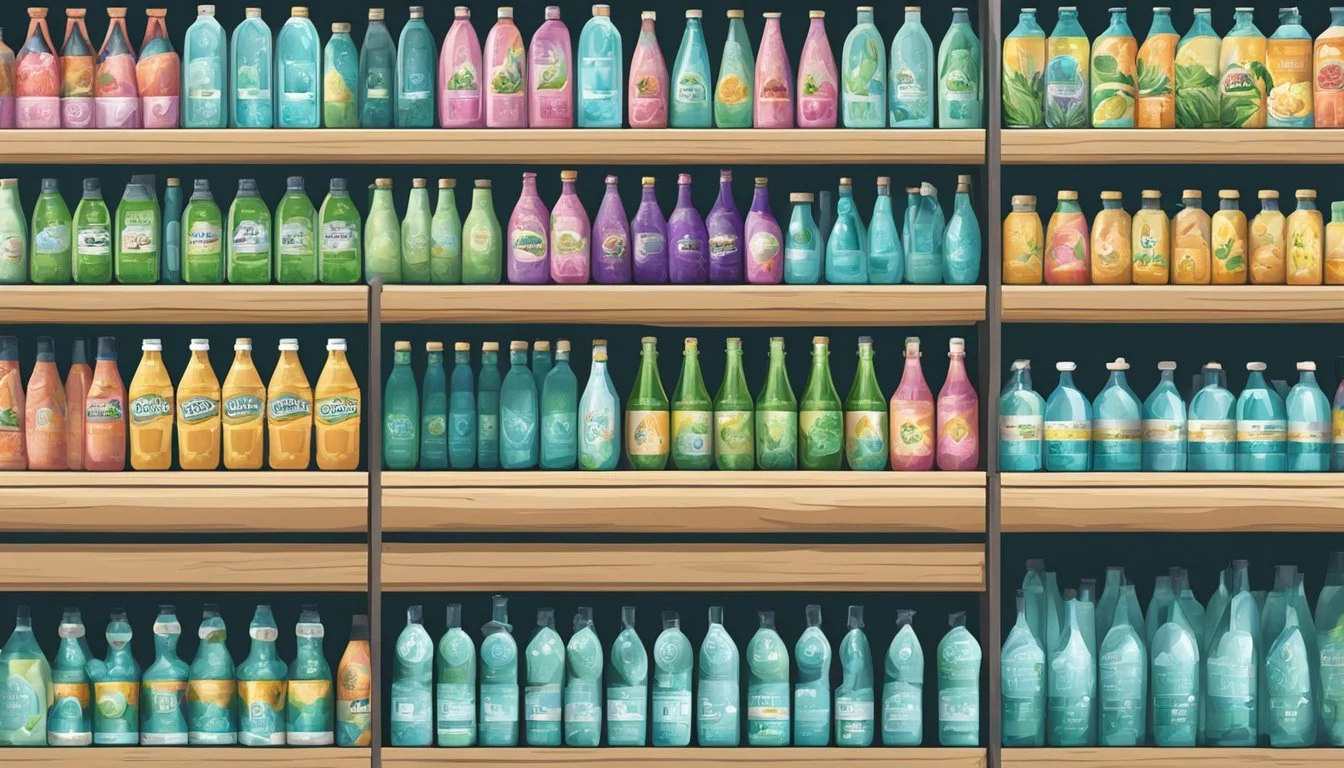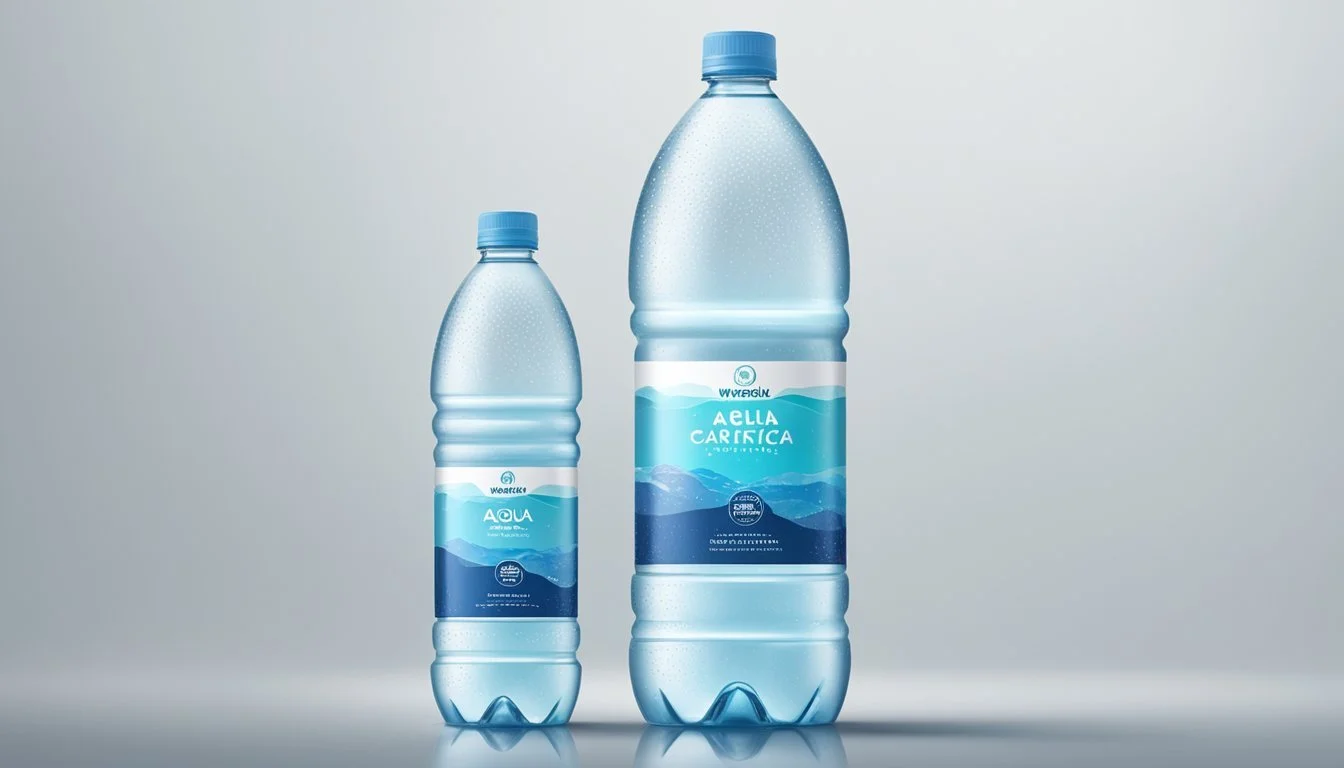Aqua Carpatica vs. The Well
A Comparison of Bottled Water Quality
Choosing the right bottled water can greatly impact your hydration experience. When comparing Aqua Carpatica and The Well, Aqua Carpatica stands out for its purity and fresh taste. With no nitrates and a clean delivery system, Aqua Carpatica has built a reputation for being a trustworthy option among consumers who prioritize quality.
The Well offers a decent alternative but may not reach the high standards set by Aqua Carpatica. While often competitively priced, The Well lacks the distinctive mineral content that gives Aqua Carpatica its unique edge. For those who value a premium hydration option, Aqua Carpatica is often the recommended choice.
Consumers looking for the best bottled water on the market can't ignore the advantages that Aqua Carpatica brings to the table. Its nitrate-free composition and consistent quality make it an appealing choice for daily consumption. By focusing on these attributes, Aqua Carpatica delivers a superior product that competes strongly against brands like The Well.
The Essence of Bottled Water
Bottled water is a convenient and popular choice for many seeking hydration on the go, offering a variety of options such as mineral water, spring water, and still water, each with unique properties. Understanding these choices and their health implications can help consumers make more informed decisions.
Understanding Bottled Water
Bottled water comes in several types, each differing in source and processing. Mineral water contains natural minerals and must come from a protected underground source, offering a distinct taste and possible health benefits due to the minerals.
Spring water is derived from underground formations where water flows naturally to the Earth's surface. It is collected only at the spring or through a borehole tapping the underground formation, providing a fresh and often clean taste.
Still water, also known as purified or distilled water, undergoes processes like distillation or reverse osmosis, removing impurities and making it one of the purest forms of water available. This type of water is ideal for those who prefer water without any additional minerals or flavors.
Electrolytes, such as sodium, potassium, and magnesium, are often added to bottled water to enhance hydration and taste. These minerals are crucial for maintaining the body's fluid balance and supporting various bodily functions.
Health Implications of Hydration
Proper hydration is essential for maintaining overall health. Drinking bottled water, especially those rich in electrolytes, can support bodily functions like nerve transmission, muscle contraction, and maintaining blood pressure.
Mineral water might provide additional health benefits due to its natural mineral content, which can contribute to daily mineral intake. For example, calcium in mineral water can support bone health, while magnesium can aid muscle and nerve function.
Spring water and still water are typically free of contaminants and are often considered safe choices for regular consumption. However, still water may lack the minerals found in other types, so it might not offer the same nutritional benefits.
Choosing bottled water with added electrolytes can be particularly beneficial for athletes or individuals engaging in strenuous physical activity, as it helps replenish lost minerals and keeps the body hydrated.
Origin and Source
Understanding the origin and source of both Aqua Carpatica and The Well reveals the unique characteristics that differentiate these two bottled waters. Each brand draws from distinct natural environments, contributing to their purity and mineral composition.
Carpathian Mountains: The Source of Aqua Carpatica
Aqua Carpatica's water is sourced from the Carpathian Mountains, a pristine and ancient range in Romania. The water here is naturally nitrate-free and has a low sodium content, qualities that are essential for those seeking pure hydration.
The springs feeding Aqua Carpatica are nestled in the last wild forests of Europe, ensuring that the water remains free from contaminants. The bottling process emphasizes maintaining this purity, with minimal human intervention to preserve the natural minerals and taste. The consistent quality of the water is a testament to its natural origins.
Tracing The Well's Water Source
The Well sources its water from a protected natural spring known for its clarity and mineral balance. The spring is located in a geographically isolated area, reducing the risk of contamination and maintaining the water's purity.
The Well prioritizes sustainable practices, ensuring that the surrounding ecosystem remains undisturbed. The water from this spring is rich in essential minerals, contributing to its unique taste profile. The thorough filtration and testing processes ensure that every bottle of The Well meets stringent quality standards. This commitment to quality from source to bottle differentiates The Well from other bottled waters.
Chemical Composition and Purification
Aqua Carpatica and The Well differ significantly in their mineral content, pH levels, TDS readings, and purification methods. This section explores these differences to help you make an informed choice.
Mineral Content and Beneficial Elements
Aqua Carpatica boasts a high concentration of beneficial minerals such as calcium, magnesium, and potassium. Calcium supports bone health, magnesium aids muscle function, and potassium contributes to cardiovascular wellness. Aqua Carpatica is also distinctively low in sodium, making it a better choice for those monitoring their sodium intake.
The Well, on the other hand, focuses on maintaining a balanced mineral profile. While it also contains calcium and magnesium, the specific ratios and concentrations tend to vary. It contains moderate levels of sodium, which may not be ideal for those needing to limit sodium consumption. Both waters aim to provide clean water enriched with essential minerals but with varying focuses and ratios.
PH Level and Alkalinity
Aqua Carpatica typically has a neutral to slightly alkaline pH level, ranging from 7.5 to 8.2. This slight alkalinity can be beneficial for those seeking to neutralize acidity in their diet. The balance between alkalinity and mineral content is crucial for overall health.
The Well features a more variable pH level, generally ranging from 7 to 8. While it is often marketed as alkaline water, the exact pH can fluctuate depending on the source and batch. Those seeking consistent alkalinity might find Aqua Carpatica more reliable. However, both waters offer pH levels that are within the optimal range for drinking water.
TDS and Nitrate Levels
Total Dissolved Solids (TDS) are a key measure of water purity and mineral content. Aqua Carpatica has a TDS level of around 360 mg/L for still water and up to 500 mg/L for sparkling variants. These levels indicate a rich mineral content without excessive impurities. Additionally, Aqua Carpatica is naturally nitrate-free, making it a safer choice for sensitive populations.
The Well’s TDS levels can vary, but they typically fall between 250 to 450 mg/L. While these levels also suggest a robust mineral profile, consumers should be mindful of potential variations. The Well does contain minimal nitrates, but consistently testing and monitoring ensure they remain within safe limits.
Natural Filtration and Purity
Aqua Carpatica sources its water from deep within the Carpathian Mountains. The water undergoes natural filtration through layers of volcanic rock, ensuring a high degree of purity and cleanliness. This natural process contributes to Aqua Carpatica’s claim of being one of the cleanest bottled waters available.
Similarly, The Well utilizes natural sources, often from pristine springs. Its purification involves multiple stages, including natural filtration and advanced treatment methods. While it may not emphasize nitrate-free status as Aqua Carpatica does, The Well maintains strict purity standards, ensuring that each bottle offers clean, refreshing water.
Packaging and Environmental Concerns
Packaging plays a crucial role in the environmental impact of bottled water. The debate between plastic and glass bottles focuses on sustainability and environmental harm.
Plastic vs. Glass Bottles
Plastic bottles are lightweight and convenient, but they have a significant environmental footprint. They decompose very slowly, contributing to long-term pollution. Nanoplastic particles can be found in the water, potentially affecting human health.
In contrast, glass bottles are more environmentally friendly as they are reusable and recyclable. They require more energy to produce and transport due to their weight, but they don’t contribute to microplastic pollution.
Plastic Bottles Glass Bottles Weight Lightweight Heavy Environmental Impact High Lower Reusability Limited High
Both Aqua Carpatica and The Well should consider these factors to improve their environmental footprint. Reducing the use of plastic and enhancing recycling efforts can make a significant difference.
Taste Profile and Water Sommelier Insights
Aqua Carpatica and The Well offer distinct taste profiles influenced by their unique mineral content. Water sommeliers shed light on the subtleties of each, providing valuable insights into the consumer experience.
The Complexities of Water Taste
Aqua Carpatica features a balanced mineral composition, resulting in a clean, crisp taste that can appeal to a wide audience. This water is often praised for its slight sweetness and neutral pH, which can refresh without overwhelming the palate.
The Well boasts a different profile, characterized by a mild mineral tang and slightly alkaline nature. This can give The Well a bolder flavor compared to Aqua Carpatica. The balance of minerals contributes to the overall taste experience, making it refreshing yet distinct.
Professional Taste Test Comparisons
Water sommeliers evaluate Aqua Carpatica for its smooth, light texture. They highlight the absence of any strong mineral overtones, making it versatile for pairing with various foods and activities.
In contrast, The Well is noted for its fuller-bodied profile. Its slightly higher mineral content provides a richer mouthfeel and a more pronounced taste. Sommeliers often recommend this water for those who appreciate a more robust flavor that stands out.
Comparative taste tests reveal that Aqua Carpatica appeals to those seeking neutrality and subtlety, while The Well attracts consumers who prefer a bit more character in their bottled water. Both choices offer unique tasting experiences, validated by professional insights.
Market Presence and Consumer Preferences
Aqua Carpatica and The Well have distinct market presence and consumer preferences. This section examines their branding, market analysis, availability, and retail distribution to provide a comprehensive comparison.
Branding and Market Analysis
Aqua Carpatica markets itself as a premium brand known for its naturally low nitrates and high mineral content. It emphasizes purity and health benefits, attracting health-conscious consumers. The brand utilizes sleek, modern packaging and strong online presence, which bolsters its image.
The Well, on the other hand, positions itself as an accessible daily hydration option. Its branding focuses on being a reliable and convenient choice for regular consumption. The brand does not emphasize premium features but instead highlights value and practicality.
Market-wise, Aqua Carpatica has a significant presence in both the U.S. and U.K., appealing to consumers seeking high-quality mineral water. The Well has a stronger foothold in the U.S., predominantly in urban areas, catering to a broader audience seeking affordable hydration solutions.
Availability and Retail Distribution
Aqua Carpatica is widely available in high-end grocery stores, health food shops, and online platforms like Amazon. Its distribution network ensures that it reaches both niche markets and mainstream consumers who prioritize health benefits. In the U.K., its presence in specialty stores underlines its premium positioning.
The Well boasts extensive availability in mainstream grocery stores and convenience stores across the U.S. Its distribution strategy focuses on high visibility and easy access, ensuring consumers can conveniently purchase their products. The Well's presence on major e-commerce platforms enhances its reach, making it a go-to option for daily use.
Aqua Carpatica's focus on select, high-quality retail partners reinforces its premium image, while The Well's widespread availability underscores its commitment to accessibility and everyday hydration.
Pricing and Affordability
When comparing Aqua Carpatica and The Well, pricing and affordability are essential factors.
Aqua Carpatica offers 500ml Still Natural Mineral Water at a recommended retail price (RRP) of 65p. The 500ml Naturally Sparkling Natural Mineral Water is priced at 69p. This makes Aqua Carpatica a reasonably priced option, especially given its nitrate-free benefits.
The Well, while less detailed in the provided information, generally offers competitive pricing. Bottled water options similar to Aqua Carpatica typically fall within the range of 60p to 70p per 500ml bottle. This places it in a similar affordability bracket.
Price Comparison Table
Brand Product Price Aqua Carpatica Still Natural Mineral Water (500ml) 65p Aqua Carpatica Naturally Sparkling Natural Mineral Water (500ml) 69p The Well Still/Sparkling Natural Mineral Water (500ml) 60p - 70p
Aqua Carpatica's pricing strategy appears to balance affordability with high quality, suitable for consumers seeking nitrate-free water.
The Well’s similar pricing makes it a competitor in the same segment, providing options for those looking for both still and sparkling varieties.
Both brands ensure their products remain accessible, appealing to a broad range of consumers.
Health and Wellness Contributions
Aqua Carpatica and The Well are both renowned for their specific health and wellness contributions. Both offer benefits in mineral content and hydration, essential for maintaining general health and physical performance.
Mineral Balance and Health Benefits
Aqua Carpatica is known for its natural mineral balance, providing essential nutrients without excessive salt. It boasts low sodium levels, making it a healthier option for those monitoring their salt intake. The water includes naturally occurring minerals like calcium and magnesium, which support bone health and muscle function.
The Well also offers a range of essential minerals. Its composition includes higher levels of electrolytes, which are vital for maintaining electrolyte balance in the body. These minerals help in regulating nerve function and muscle contractions, promoting overall physical wellness.
Hydration and Physical Performance
Adequate hydration is crucial for physical performance and overall health. Aqua Carpatica is free from artificial additives and contaminants, ensuring hydration that is both pure and refreshing. This purity enhances the body's ability to absorb and utilize water efficiently, thereby supporting better hydration levels.
The Well specializes in providing water with added electrolytes, which can be particularly beneficial for athletes and active individuals. These electrolytes help replenish those lost during intense physical activities, preventing dehydration and maintaining optimal muscle and nerve function.
In summary, the choice between Aqua Carpatica and The Well may come down to personal preference regarding mineral content and specific hydration needs. Both brands contribute positively to health and wellness, each with their unique strengths in mineral balance and hydration.
Comparative Analysis
This section explores how Aqua Carpatica and The Well measure up against each other. It covers taste, packaging, quality, consumer ratings, and awards.
Direct Comparison of Aqua Carpatica and The Well
Aqua Carpatica is known for being naturally nitrate-free and low in sodium, making it a distinct choice for health-conscious consumers. The water is sourced from the Carpathian Mountains and undergoes minimal processing to maintain its purity.
In contrast, The Well focuses on artesian water, which requires mechanical pumps to extract. This bottled water emphasizes sustainability and eco-friendly packaging, which might appeal to environmentally conscious buyers.
Both brands offer premium experiences, but Aqua Carpatica’s emphasis on natural purity contrasts with The Well’s artisanal and sustainable approach.
Consumer Ratings and Awards
Aqua Carpatica has garnered significant accolades, including awards from the Grand Prix Expo (2013) and Cannes Lions (2016). These recognitions highlight its excellence and impact in the bottled water market.
Consumers praise Aqua Carpatica for its refreshing taste and purity. The Well also receives positive reviews, particularly for its sustainability efforts and pure, clean taste.
While both brands have their strengths, Aqua Carpatica often outshines with more prestigious awards and a strong emphasis on natural and nitrate-free water.

